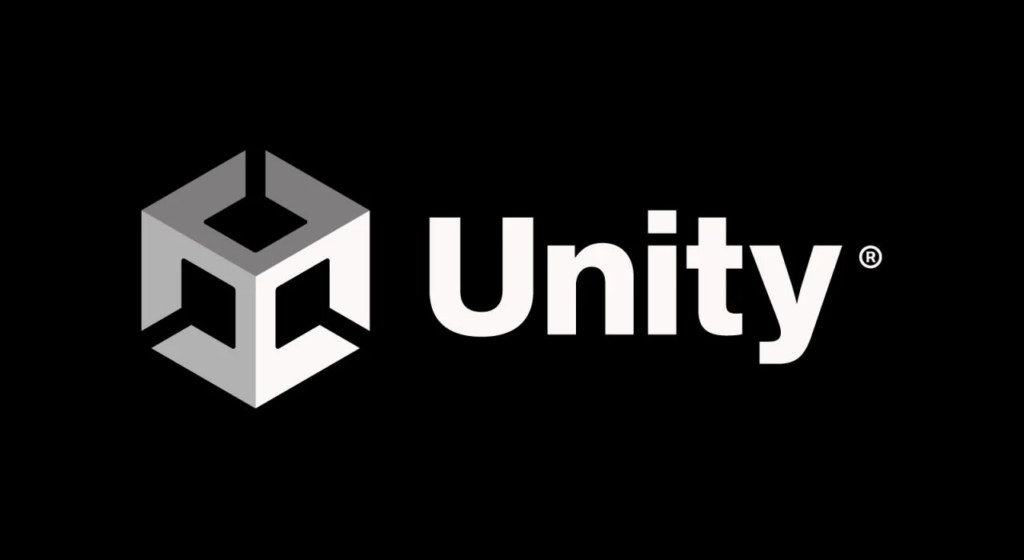
Unity Software Inc. is a leading platform for creating and operating real-time 3D content, serving industries such as gaming, architecture, and animation. Its tools enable developers to build and monetize interactive experiences across various devices, including mobile phones, tablets, PCs, consoles, and augmented and virtual reality platforms.
Financial Performance
In the third quarter of 2024, Unity reported revenue of $446.52 million, marking a 17.95% decrease from the same period in the previous year. This decline contributed to a trailing twelve-month revenue of $1.97 billion, down 3.13% year-over-year.
Stock Performance
As of December 13, 2024, Unity’s stock price is $26.12 USD, reflecting a slight decrease from the previous close. Over the past six months, the stock has risen by 60.51%, and it has gained 61.44% in the previous three months. Currently, Unity is trading at 24.31%, 27.92%, and 32.56% relative to its 20-Day, 50-Day, and 200-Day Simple Moving Averages, respectively.
Recent Developments
In September 2023, Unity faced significant backlash from developers due to a proposed “runtime fee” pricing model, which has since been fully revoked under the leadership of CEO Matthew Bromberg. The company has introduced Unity 6, aiming to rebuild trust with developers by offering enhanced features and long-term support.
Analyst Perspectives
Analysts have mixed views on Unity’s stock. In October 2024, Wells Fargo initiated coverage with an “Equal Weight” rating. Earlier, in September 2024, Stifel reiterated a “Buy” rating with a price target of $25. Morgan Stanley also raised its rating with a price target of $22.
Conclusion
Unity Software Inc. continues to be a pivotal player in the real-time 3D content creation industry. Despite recent financial challenges and strategic shifts, the company’s commitment to innovation and responsiveness to developer concerns position it for potential growth.
Disclaimer: This analysis is for informational purposes only and should not be considered financial advice. Consult with a financial advisor before making investment decisions.
Profitability and Growth Strategy
To address its recent revenue decline and drive long-term profitability, Unity Software Inc. has outlined several key strategies:
- Refocused Monetization Model: Following the backlash against the “runtime fee” pricing model, Unity has committed to more developer-friendly policies to maintain and grow its user base. This includes more transparent pricing structures and avoiding additional fees that could alienate developers.
- Expansion Beyond Gaming: Unity is actively diversifying its revenue streams by targeting industries like architecture, automotive, film, and augmented/virtual reality (AR/VR). These sectors represent significant growth opportunities for Unity’s real-time 3D technology.
- Product Innovation with Unity 6: The launch of Unity 6 aims to enhance the platform’s technical capabilities, including improved graphics rendering, stability, and tools for long-term developer support. This positions Unity as a more reliable and powerful engine for developers.
- Strategic Partnerships: Unity is forming partnerships with technology leaders to integrate its engine into broader ecosystems, such as AI-driven tools and cloud computing services, expanding its technological edge.
- Cost Optimization: Unity is also focusing on operational efficiency by streamlining expenses and optimizing resource allocation to enhance profitability margins while investing in growth areas.
These strategies are designed to stabilize Unity’s financial performance, attract new users, and secure long-term growth in an increasingly competitive market.
Developer Relations
Unity Software Inc. has taken several steps to rebuild trust and strengthen relationships with its developer community after the “runtime fee” controversy:
- Cancellation of the Runtime Fee: Unity fully revoked the proposed “runtime fee” pricing model, directly addressing developer concerns and demonstrating a willingness to listen to feedback.
- Introduction of Unity 6: The launch of Unity 6 comes with enhanced features, improved stability, and long-term support, providing developers with a more robust and reliable platform for their projects.
- Transparent Communication: Unity has pledged to maintain clearer, more consistent communication with its developer community, ensuring that major policy changes are announced transparently and with adequate consultation.
- Developer-Friendly Policies: The company has implemented policies that prioritize fairness and flexibility, such as offering more predictable pricing models and support tailored to small and independent developers.
- Engagement Initiatives: Unity is hosting developer forums, webinars, and workshops to engage directly with its user base, address concerns, and showcase new features that align with developer needs.
- Enhanced Support Services: Unity has expanded its customer support offerings, including dedicated channels for enterprise clients and more accessible resources for small studios and indie developers.
These efforts are part of Unity’s broader strategy to rebuild its reputation, foster loyalty, and reinforce its position as a trusted partner in the real-time 3D development ecosystem.

Product Innovation
The release of Unity 6 is expected to significantly impact Unity Software Inc.’s market share and competitive positioning by enhancing its technological capabilities and addressing developer needs more effectively. Here’s how Unity 6 aims to achieve this:
Impact on Market Share and Competitive Positioning:
- Developer Retention and Attraction: Unity 6 introduces long-term support and improved stability, features that are likely to attract new developers and retain existing users who may have considered alternatives like Unreal Engine.
- Expanded Use Cases: The advancements in Unity 6 position the platform as a more versatile tool, appealing not just to game developers but also to industries such as architecture, film, automotive, and augmented/virtual reality (AR/VR).
- Rebuilding Reputation: By addressing developer concerns and rolling out a polished, forward-looking product, Unity 6 helps rebuild trust, which could improve its competitive standing.
Key Features and Advancements:
- Enhanced Graphics Rendering: Unity 6 offers superior rendering capabilities, enabling developers to create more visually stunning and realistic content.
- Performance Optimization Tools: Improved performance tools allow developers to build more efficient applications, particularly for hardware-intensive platforms like AR/VR.
- Long-Term Support (LTS): The new LTS model ensures a stable development environment with updates and bug fixes over an extended period, addressing one of the developers’ critical needs.
- AI and Machine Learning Integration: Unity 6 incorporates AI-driven tools to streamline content creation, optimize workflows, and enable dynamic in-game experiences.
- Cross-Platform Compatibility: Enhanced support for cross-platform development ensures seamless deployment across devices, from mobile to next-gen consoles and AR/VR devices.
- Open Ecosystem for Plug-ins: Unity 6 features an open ecosystem, enabling easier integration of third-party tools and plug-ins, which expands its utility.
By focusing on these innovations, Unity 6 sets itself apart in the competitive landscape, appealing to both creative and enterprise developers looking for a powerful, flexible, and stable real-time 3D content creation platform.
Strategic Partnerships
Unity Software Inc.’s strategic partnerships with technology leaders are pivotal in expanding its ecosystem, strengthening its technological edge, and enhancing its competitive positioning. Here’s how these partnerships are shaping the company’s future:
Key Strategic Partnerships and Their Impact:
- AI-Driven Tools:
- Partnerships with AI Leaders: Unity is collaborating with major AI companies to integrate machine learning and generative AI capabilities into its platform. These tools streamline content creation, automate repetitive tasks, and enable developers to design more dynamic and personalized in-game experiences.
- Impact: These advancements not only improve productivity for developers but also position Unity as a leading platform for innovation in gaming and other industries.
- Cloud Computing Services:
- Collaboration with Cloud Providers: Unity has teamed up with cloud giants like Microsoft Azure and Google Cloud to provide scalable, cloud-based solutions for developers. These services include real-time collaboration, cloud rendering, and storage solutions for large-scale projects.
- Impact: By leveraging cloud technology, Unity enables developers to work more efficiently, particularly in remote and distributed teams, while reducing infrastructure costs.
- Integration with AR/VR Ecosystems:
- Hardware Partnerships: Unity is partnering with AR/VR hardware manufacturers such as Meta (Oculus) and Apple (Vision Pro) to optimize its engine for immersive content creation.
- Impact: These collaborations ensure Unity remains a go-to platform for AR/VR development, capitalizing on the growing demand for immersive experiences.
- Automotive and Industrial Partnerships:
- Collaboration with Automotive Giants: Unity is working with companies like Volvo and BMW to power real-time 3D visualizations for design, simulation, and marketing purposes.
- Impact: This diversification beyond gaming helps Unity tap into high-value industrial use cases, driving additional revenue streams.
- Media and Entertainment Alliances:
- Film and Animation Partnerships: Unity is extending its capabilities in real-time rendering for movies and animation, forming alliances with studios to produce cutting-edge visuals.
- Impact: This expansion into the media sector strengthens Unity’s presence in a broader range of creative industries.
Long-Term Benefits of Strategic Partnerships:
- Enhanced Developer Ecosystem: These collaborations provide developers with access to state-of-the-art tools and resources, making Unity more attractive as a development platform.
- Increased Market Penetration: By integrating into various industries and ecosystems, Unity widens its addressable market, ensuring a diversified revenue base.
- Technological Leadership: Partnerships with leaders in AI, cloud computing, and AR/VR reinforce Unity’s position as a technological pioneer in real-time 3D content creation.
Unity’s strategic partnerships are a key pillar of its growth strategy, enabling the company to stay ahead of the curve in a rapidly evolving industry.

Cost Optimization
Unity Software Inc. is emphasizing cost optimization as a critical component of its strategy to enhance profitability while maintaining growth momentum. Here are the key actions Unity is taking to streamline expenses and optimize resource allocation:
Key Cost Optimization Strategies:
- Organizational Restructuring:
- Unity has restructured its workforce and streamlined internal operations to eliminate redundancies and focus on core business areas.
- Impact: This reduces overhead costs while ensuring resources are directed toward high-growth segments such as gaming, AR/VR, and enterprise applications.
- Rationalizing Product Lines:
- Unity is evaluating its product offerings to discontinue or consolidate underperforming services, ensuring investment is concentrated on high-demand tools like Unity 6.
- Impact: This improves resource utilization and ensures the company’s efforts align with market demand.
- Leveraging Cloud Services:
- By adopting scalable cloud-based solutions, Unity has reduced on-premises infrastructure costs while enhancing operational flexibility for developers.
- Impact: This shift not only lowers capital expenditure but also enables Unity to offer more competitive services to its user base.
- Optimizing R&D Investments:
- Unity is prioritizing research and development in areas with the highest potential return on investment, such as advanced rendering technologies and AI-driven tools.
- Impact: Focused R&D ensures innovation without overspending, contributing to better financial health.
- Improved Vendor and Supply Chain Management:
- Unity is renegotiating contracts with vendors and streamlining its supply chain processes to minimize costs associated with third-party tools and services.
- Impact: This helps in achieving cost savings without compromising quality or delivery timelines.
- Revenue-Driven Expense Management:
- The company is tying operational expenses more closely to revenue performance, ensuring scalable spending based on market conditions.
- Impact: This flexible approach to expense management enhances margin stability.
Long-Term Benefits of Cost Optimization:
- Improved Profit Margins: Cost-cutting measures directly enhance Unity’s bottom line, making the company more attractive to investors.
- Sustainable Growth Investments: Savings from cost optimization are being reinvested into growth areas, such as expanding Unity’s presence in industrial and non-gaming markets.
- Resilience to Market Changes: Streamlined operations position Unity to weather economic uncertainties more effectively while maintaining competitiveness.
By focusing on operational efficiency and disciplined resource allocation, Unity is building a more financially resilient foundation, ensuring sustainable profitability and growth.
Unity Stock Price